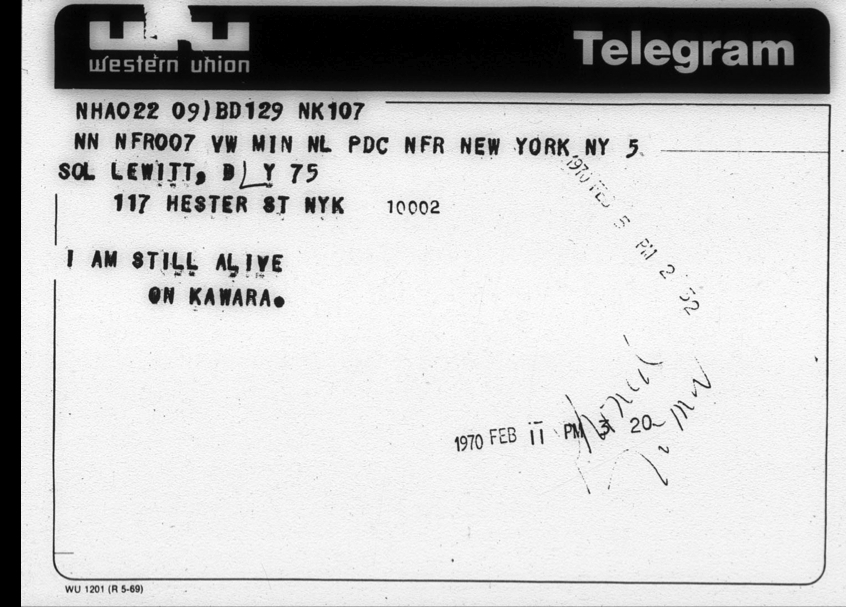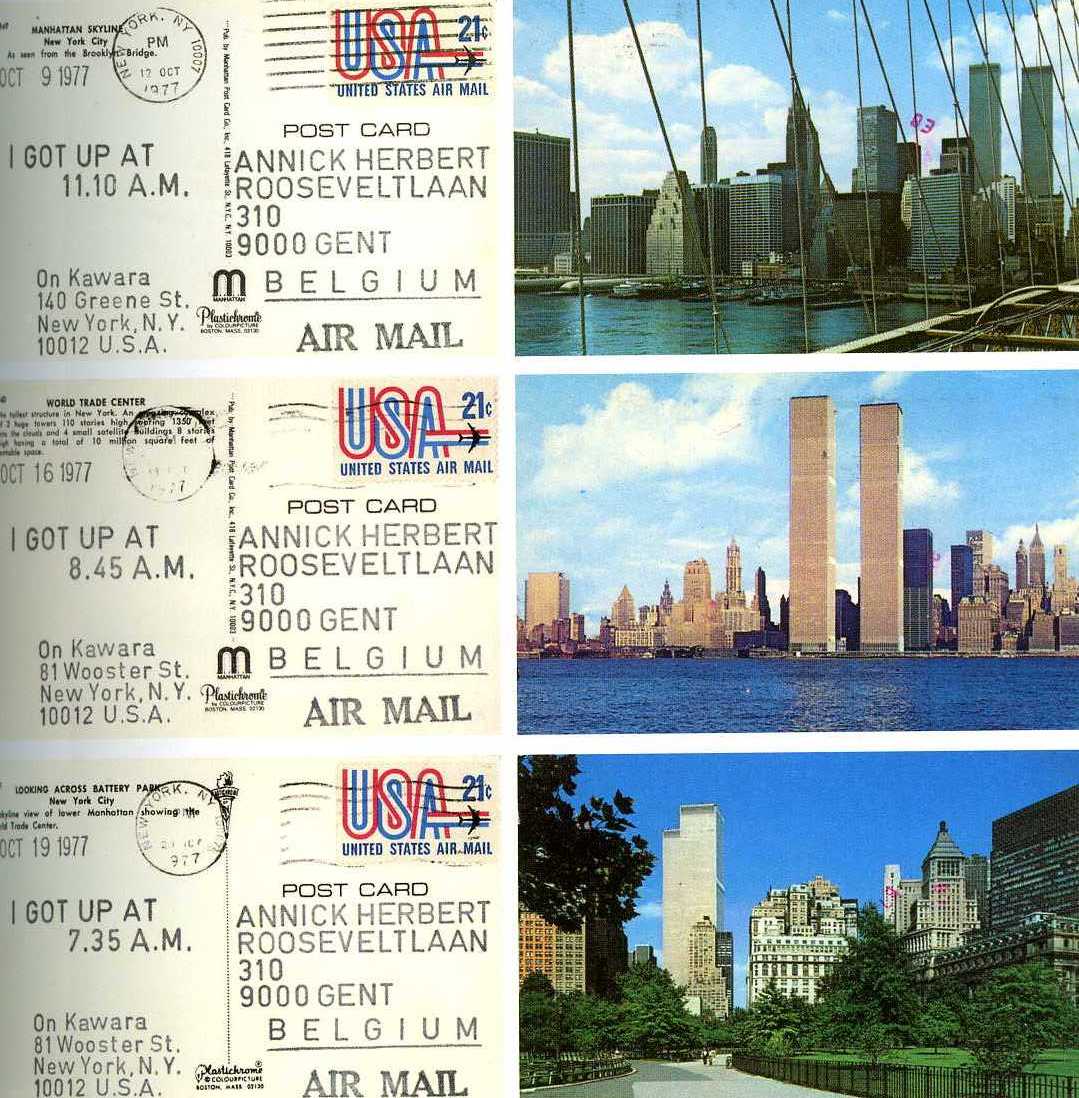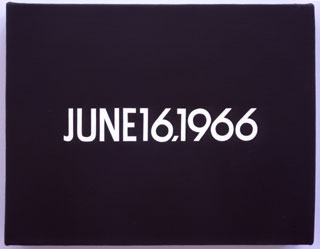
On Kawara would send a telegram to his friends and it would include the words "I am still alive." This so called artwork compares to all of his other pieces. Personally I do not consider just about any of his work as art. When I think of art, I think of colors or pictures or something I enjoy looking at. Words on a paper do not catch my eye or really interest me one bit.
As a conceptual artist, On Kawara demonstrated how the negative aspects of life also kind of take over the feeling with the word “alive” in his ongoing series of telegrams titled “I Am Still Alive.” The telegrams are sent to his friends to let them know that, yes, he is still alive.
When viewing these telegrams we are forced to think about the day they will stop arriving. By drawing attention to the fact that he is still alive, Kawara forces us to consider the negative: his death. Although his artwork doesnt really seem too enjoyable to look at, I think a lot of it has some pretty in depth meaning to it. This piece relates to the Today series and I got up, the two other pieces of art I discussed. He creates this art every day, whether it is about him getting up, him being alive or On Kawara simply creating artwork that displays that specific day he is making the art.

